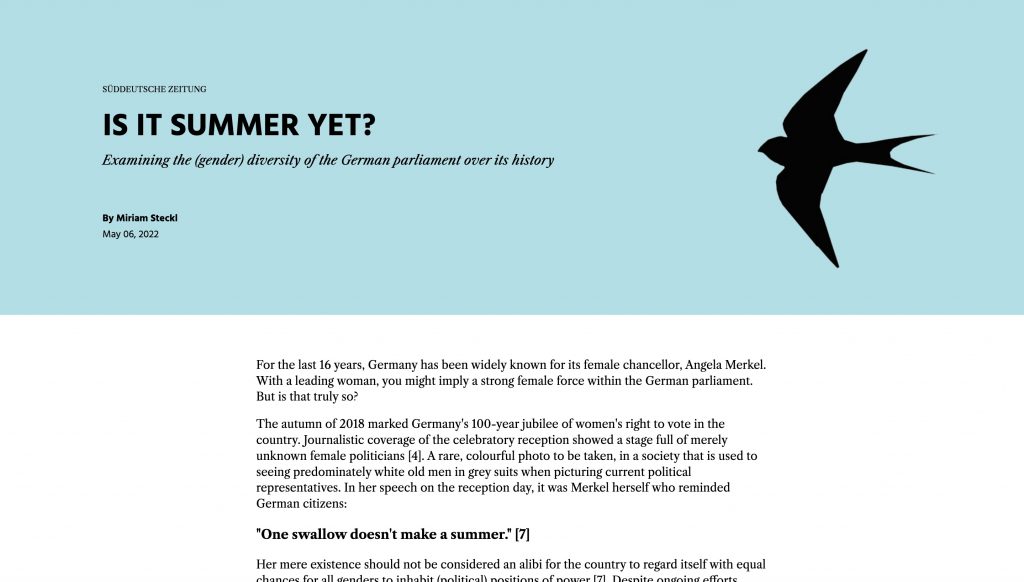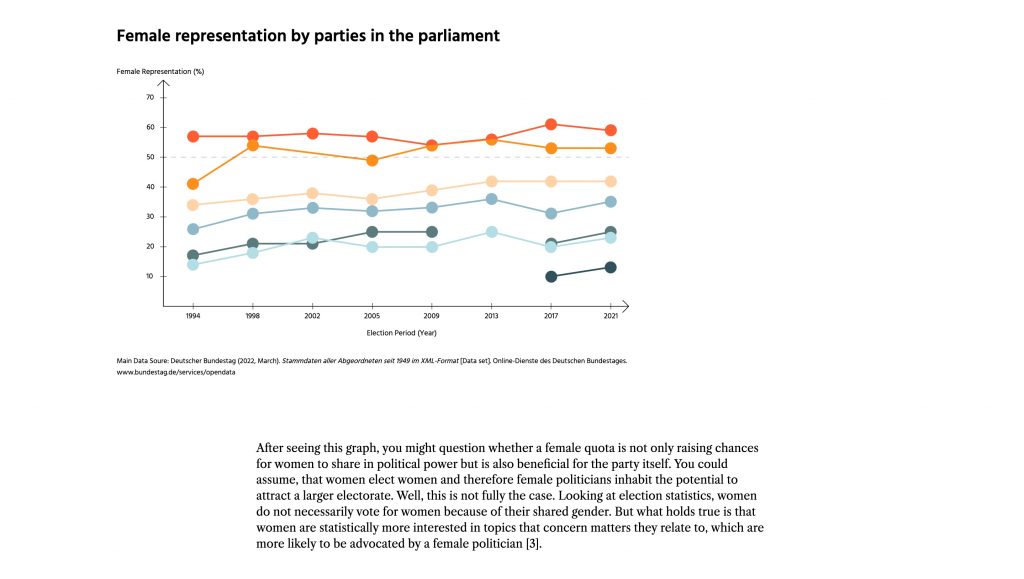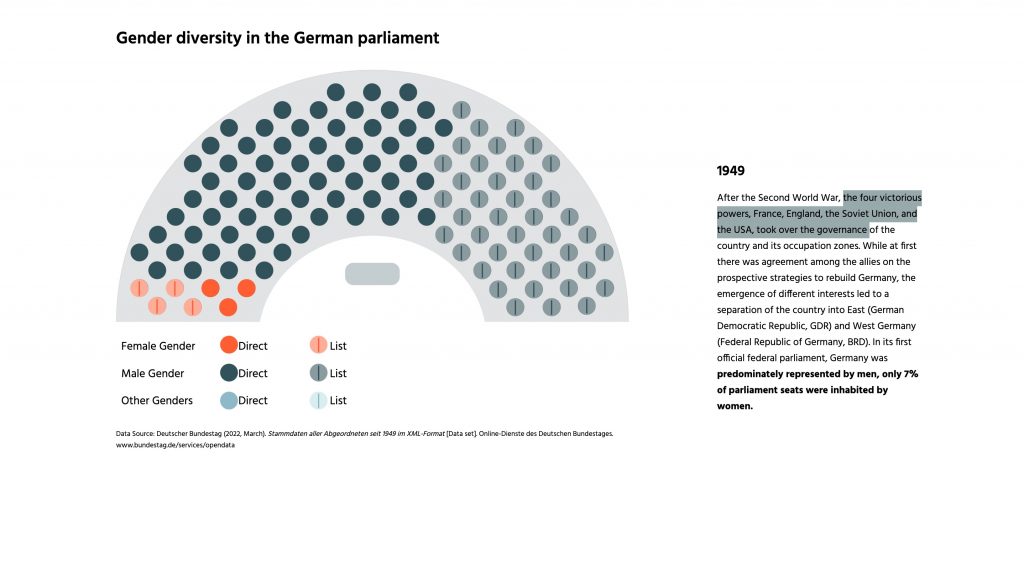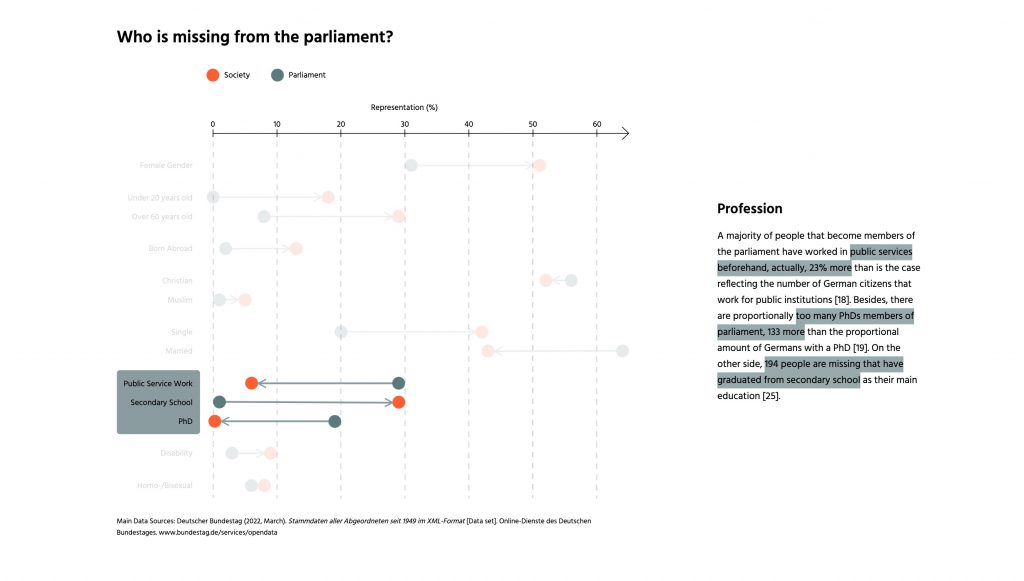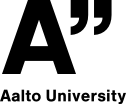Is it summer yet is an investigative article that argues for more gender equality in the German parliament. Implemented as a scrollytelling format, the article combines narrative and three data visualisations that explain to the reader why there is still a long time towards a summer, meaning gender parity, in Germany’s government.
Within the course Studio: Information D at Aalto University, this project set out to examine gender equality in the German political landscape. After initial desktop research, it became apparent that people identifying as women and other genders were largely underrepresented. Therefore, the project defined the objective to raise awareness about the lacking (gender) diversity in the German parliament and convince a public German audience to support the controversial quota in political parties.
Subsequently, a scientific literature review was conducted to define the narrative goals of the project. Reading about feminist data visualisations, a secondary goal became to incorporate four of the defined principles by D’Ignazio and Klein (2017), including rethinking binaries and considering context. Additionally, an analysis of the present-day German media landscape confirmed a gap in evidence-based data stories on the topic.
Another research methodology of the project was a visual analysis of existing data visualisations on politics and gender equality. The collected graphs on the mood board revealed that most of the information designers divided data into a binary of male and female. The project’s objective was to avoid this approach.
The German parliament provides an open data set of all parliament members from 1949 onwards (Deutscher Bundestag, 2022). This dataset was converted and cleaned, and subsequent calculations were performed manually. The findings of this analysis confirmed that the numbers did indeed verify the assumptions of missing women and other genders in government and the connection between parties’ attitude towards a quota and the diversity of their members.
All insights were integrated into many rounds of iterating the design concept. Following the creation of a mockup in Figma, the project was implemented as code. The project ultimately resulted in a scrollytelling website, embedded in the German newspaper Süddeutsche Zeitung.
